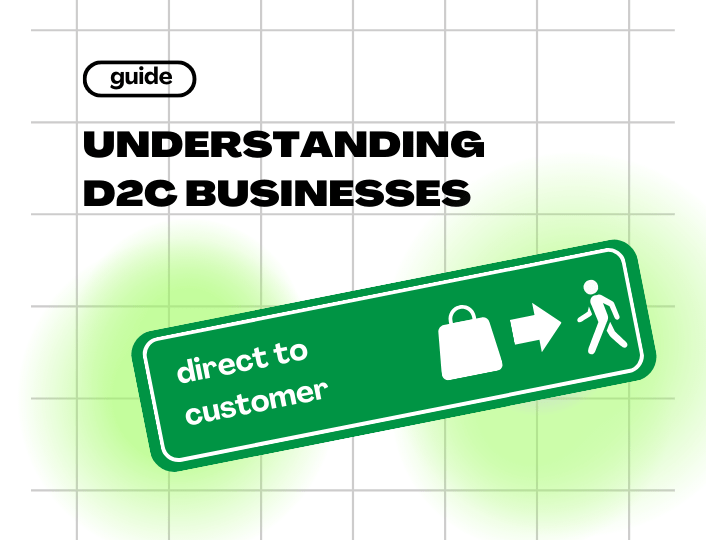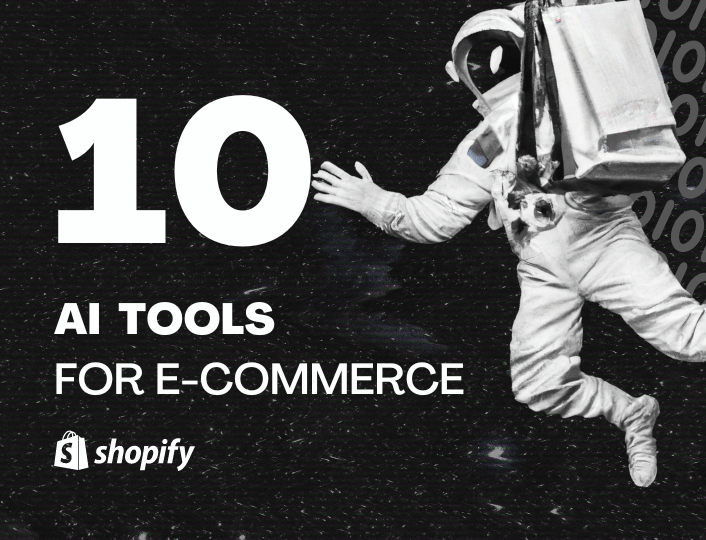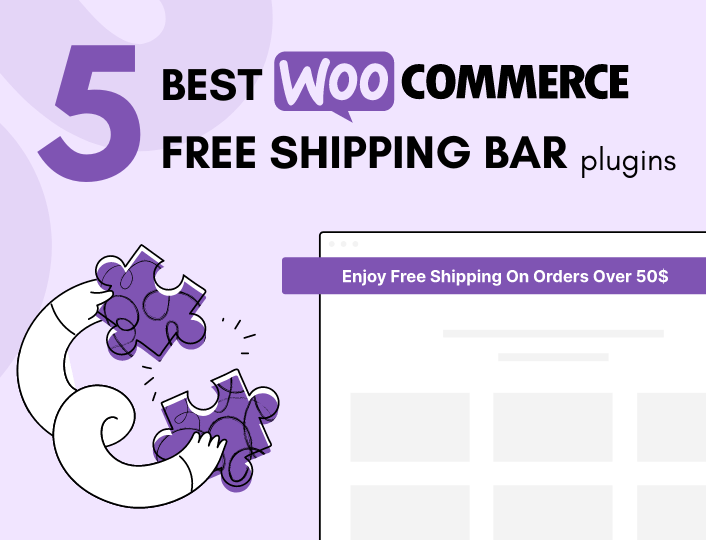What’s the D2C model? And how is it any different from the B2B and B2C models? Both B2C and D2C cater to consumers — individuals. But only one has the potential to become a pattern – and it already is one — particularly within ecommerce.
Twenty years ago if you wanted new sunglasses, you’d head over to the nearest retail store, look through their stocks, select a fancy piece, and pay at the cashier’s. Today, you only need to open Instagram and locate Warby Parker. You’d browse their catalog, add one or two items to cart, make payments, and expect your order at your doorstep.
D2C businesses, such as Warby Parker, reclaim the distribution role by self-handling product manufacturing and distribution. They manage the entire order fulfillment process without involving a third party.
This model offers a personalized experience and a streamlined delivery process. But it’s not without its challenges.
In this piece you’d learn about D2C is, its benefits and challenges, and a few successful D2C businesses. Let’s get into it.
What are D2C businesses?
D2C stands for direct to consumer (also abbreviated as DTC). These businesses are responsible for producing, testing, and delivering to consumers through different owned or rented channels.
When D2C businesses sell on their websites, they’re distributing products via owned media or channels. These channels include e-commerce platforms like Shopify or Alibaba, community channels, or a retail store. Selling on social media is also viable, with platforms like Instagram, Facebook, YouTube and recently, TikTok.
The “direct to consumer” model deviates from the conventional way of marketing and distributing products through middlemen. This gives room for executing innovative ad campaigns.
In 2012, the Dollar Shave Club disrupted the men’s care and shaving market with a viral marketing ad. In the video, the CEO delivers a nonchalant monologue about the brand’s aim – to give buyers better quality at a $1 price, far below what was considered the average price.
The video, captioned “Our Blades Are F**king Great”, was the most non-adsy ad at the time. Did it work? Yes, prompting over 12,000 orders within a two-day span. The video currently sits at 28M views on YouTube.
What made it work? We could argue that it was Mike’s almost-sarcastic monotone through the 93-seconds clip. Or that the video showed the behind-the-scenes, panning from Mike’s makeshift office to the warehouse. Or that the video featured the factory workers, the hands behind the product.
These factors share a mutual point: the producers were speaking directly to potential buyers. Prior to this ad, Dollar Shave Club had launched a website. So prospects had only one place to order from — the company’s website.
Their idea, which is the central idea for any D2C business, is to displace the role of the middleman.
The model works in any industry. Canadian-American actor Ryan Reynolds runs Aviation American, a D2C gin company. Fenty Beauty by Rihanna sells its cosmetic products primarily through its online channels, a major feature of D2C businesses. The two companies sell directly to consumers.
We can go on with case studies of companies subscribing to D2C. However, we should review the key benefits and challenges of building a D2C business.
Benefits & Challenges of the D2C Business Model
The D2C model thrives on removing in-between parties during the product’s journey to the consumers.
But isn’t this more stressful? For decades, businesses have relied on distributors, resellers, and wholesalers to ship and sell their products. What then are the benefits and challenges of adopting a different approach?
Making more profits is an obvious benefit, but there’s more.
Benefits of Using a D2C Business Model
Some benefits depend on your industry or market. For example, with D2C, you can give quicker responses to market trends, though this depends on the industry. However, these benefits are consistent with all industries:
Control Over Product Pricing
Consumers purchase D2C products directly from the brands’ channels. This prevents any incidents of price fluctuation.
Let’s take a look at Dollar Shave Club. One glance at their catalog shows that their 2.9oz Antiperspirant sells at $5.00 per unit. This price is uniform across all their channels, since they all lead you to order from the same source: their website.
For non-D2C brands, the story’s different. Retail prices fluctuate with location, wholesaler’s desired profit cut, product demand, and more.
If you’ve done a lot of shopping, then you’ve possibly bought the same pack of Diet Coke at two varying prices within the same period. Same goes for your preferred toothpaste, your favorite sneakers, and numerous other B2C products.
The D2C model gives you absolute control over product pricing. You’re not selling at $5.80 while two different wholesalers sell at $6.00 and $6.20. This also helps customers with proper budgeting prior to making a purchase.
More Profits
Production, packaging, and shipping are inevitable expenses. Since the D2C model cuts out distribution from its supply chain, this reduces costs associated with distribution and markup fees by middlemen.
You can set competitive prices, especially since you know the costs of production, packaging and shipping. This allows potentially higher profit margins. Because you control pricing, you can regulate your product’s price based on market demands.
In D2C, you manage your marketing efforts. Take Casper, who manages both an online channel — a website — and multiple retail stores.
They can run ads across their social media profiles, promote their brand via blog content, and create quizzes to engage their audience. Presently, they run a referral program that pays $75 for every referral. Since prospects can only purchase via their owned platforms (digital or physical), they can measure all sales and determine if their present pricing accommodates more or less profits.
If you sell in D2C — that is, you create your products — you can equally set up discounts, referrals, and other promo programs to persuade buyers. It’s easy to do this if you set up your store on a platform like Shopify. You can install Adoric to maximize your store traffic and better conversion rates.
In D2C, the more marketing you do, the more organic reach you’d create for your business, affecting sales and profits.
Access to Valuable Customer Data
Your customers are everywhere; how do you find them? How do you gather and process their information to improve your product?
On your website, you can use tools like Hotjar and Fullstory to track customer behavior. See what pages they linger on, how they transition, where they drop off, and average users’ sessions. You can use this information to deduce the right strategy to reach them. You can determine what needs to be changed in your funnel or know what pages to remove.
Social media also gives you access to customer data and analytics. This is particularly handy for running sponsored ads and creating marketing campaigns (more on this later).
With data such as purchasing preferences from analytics, you can create a suitable buyer persona. You can also measure geographical and demographic data including age, country of residence, device type, etc.
Other channels to explore include community forums (Quora, Reddit) and pay-per-click platforms (Google AdWords).
Personalized Marketing Campaigns
Personalized marketing campaigns in D2C are powered by data-driven insights, segmentation, and targeting strategies.
As a D2C brand owner, you can convert customer data, including demographic information, browsing behavior, and past purchases, to create highly targeted and relevant marketing messages.
Segmentation is also easy because you have access to a comprehensive list of all your buyers across distinct groups with similar characteristics. You can craft personalized messaging that speaks directly to individual customers’ preferences and needs.
You can deduce if a particular marketing strategy would be a hit or miss before publishing it. Recall the “Our Blades Are F**King Awesome” video? Dollar Shave Club has since published a couple more YouTube promo videos, all to warm reception. It’s no surprise, given the feedback from their debut video.
It gets easier to deliver personalized product recommendations. The ability to conduct A/B testing increases your chances of effective, successful campaigns. This allows you to continuously improve and refine their messaging for maximum engagement, conversion rates, and long-term customer loyalty.
Challenges of Choosing a D2C Business Model
The two biggest challenges of running a direct-to-consumer brand are scalability and adaptability. Let’s look at those:
Adaptability
The D2C model of the 2010s differs from that of the 2020s. Ten years ago you could create a product, an Instagram account, and build a massive following within six months.
Now you have to think about twenty other business owners doing the exact same thing or something similar.
Harvard Business School professor Len Schlesinger and Matt Higgins, the CEO of private investment firm RSE Ventures, explain this best. Co-writing a course on Reinventing the Direct-to-Consumer Business Model, they stated that they set out to strip off the notion of an easy-to-run D2C model based solely on its cheap cost of acquiring customers.
Speaking with the HBR strategy team, they identified that “There are no inexpensive ways of acquiring customers through Instagram and Snapchat…all the institutional players and corporations competing for the same eyeballs to those same channels,” Adding to this, they infer that “now you need to also forecast and plan for a retailer strategy, which you didn’t have to do ten years ago.”
They share a study of how they helped Magic Spoon, a high-protein, keto-friendly cereal product solve the problem of customer acquisition and figuring out a proper retail strategy.
“Everybody gets excited about being the next Dollar Shave Club,” Matt says, “but we tell you how to do that, how to find more customers, how to move beyond one or two products.”
Scalability
With retailers and other middlemen, you don’t have to worry about pushing your products to a wide audience.
However, this becomes your headache as a D2C producer. You’re responsible for prototyping, testing, producing, packaging, and fulfilling orders. For every new product you add to your inventory, your workload for an efficient delivery system triples.
Your online platforms aren’t excluded. Managing a social media page with 10,000 followers imposes a lesser weight of duty than managing one with two million followers. The more you grow, the more you have to plan, strategize, and streamline your business activities.
But you don’t have to fear anything. These businesses below did it, so you can too.
Examples of D2C Companies
We’ve mentioned Dollar Shave Club and Warby Parker as two successful D2C companies. Here are three more:
ThirdLove
ThirdLove is a lingerie and intimate apparel brand that specializes in offering a wide range of sizes and inclusive options for women. Their products are so good they got a full-page review on WireCutter, the New York Times product recommendation service.
The review, which lists the immense benefits of ThirdLove’s 24/7 bra, says, “[the bra] is well worth it for what it offers: the just-right amount of shaping and lift (the push-up is subtle, not va-va-voom); the absence of any scratchy tags or too-sharp hooks; and smooth memory foam cups that mold to my body and then, exactly as I had wished for, vanish from my awareness entirely.”
ThirdLove leverages the D2C model by selling their products directly to customers through their website and mobile app. They focus on customer feedback and data analytics to continuously improve their products and tailor their offerings to meet customer needs.
They also prioritize customer education and empowerment, with a focus on body positivity and inclusivity in their marketing campaigns and brand messaging.
Casper
Casper dedicates an entire webpage to showing customers the behind-the-scenes. Titled Inside Casper, they invite customers to go under the covers with Casper Labs. Customers get access to the ideation, design, and manufacturing processes of Casper’s comfort mattresses and products.
They focus on high-quality mattresses and sleep solutions for customers. It’s no shock that they offer the best customer experience for a D2C business.
Casper leverages digital marketing strategies, such as social media advertising and influencer partnerships, to reach a wide audience and drive sales.
They also offer a risk-free trial period and a hassle-free return policy, enhancing customer trust and satisfaction.
Away
Founded in 2015, Away offers premium luggage and travel accessories in a potpourri of colors. They use the DTC model by selling their products directly to consumers through their website and physical retail stores, bypassing traditional retail channels.
Away creates a seamless online shopping experience, with user-friendly website design (proof above), detailed product descriptions, and customer reviews to build trust and credibility.
They also incorporate storytelling and brand narratives into their marketing campaigns. Their success affirms that with the right strategies any business can succeed with the D2C model.
Conclusion
In 2024, entrepreneurs have a certain opportunity: the possibility of meeting customers anywhere on the internet. This changes the dynamics of buying and selling, and makes it easy for D2C models to focus on meeting their customers directly.
Before you create a D2C business, check that your unique offerings fits into the framework we’ve discussed. Be sure that you’ve set up a website where customers can buy from you. Not sure where to start?
Set up a Shopify store and throw in a third-party CRO tool like Adoric. We’d help you get the most out of your organic reach in no time.




